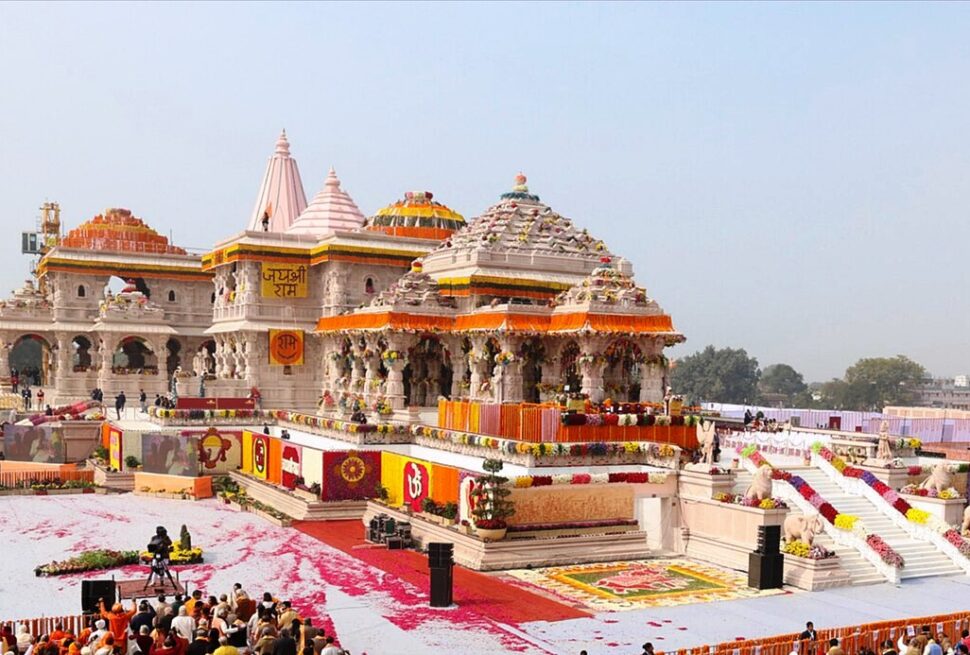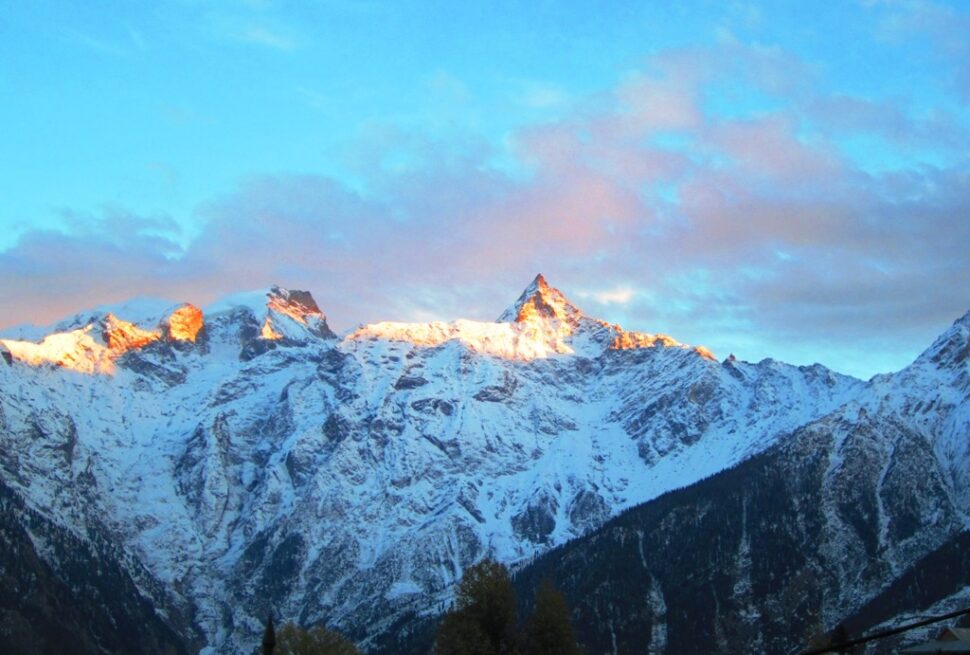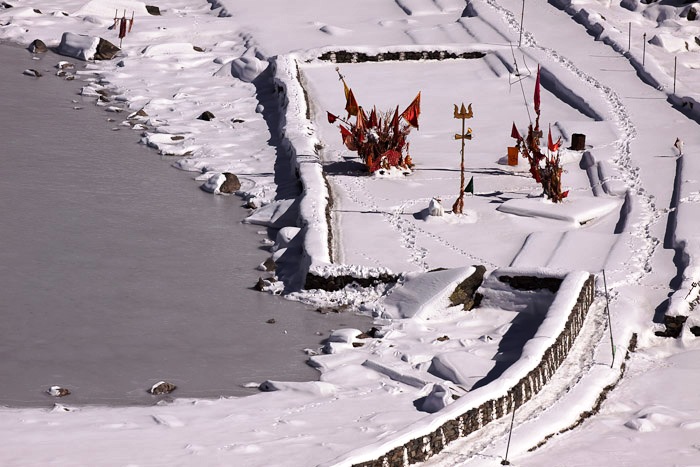The Adi Kailash Yatra, also known as the Chhota Kailash Yatra, is a revered pilgrimage and trekking journey to the Adi Kailash Peak in the Kumaon region of Uttarakhand, India. Nestled in the eastern Kumaon Himalayas near the Indo-Tibetan border, Adi Kailash stands at an elevation of 6,310 meters (20,700 feet) and is considered one of the holiest mountains in Hinduism. It is revered as a spiritual counterpart to Mount Kailash in Tibet, the ultimate abode of Lord Shiva.
This pilgrimage combines the spiritual experience of visiting a sacred mountain with the adventure of trekking through breathtaking Himalayan landscapes, making it a once-in-a-lifetime journey for devotees and nature enthusiasts alike.
In this essay, we will explore the mythological significance, the journey’s route, the challenges faced, and the profound spiritual and natural beauty of the Adi Kailash Yatra.
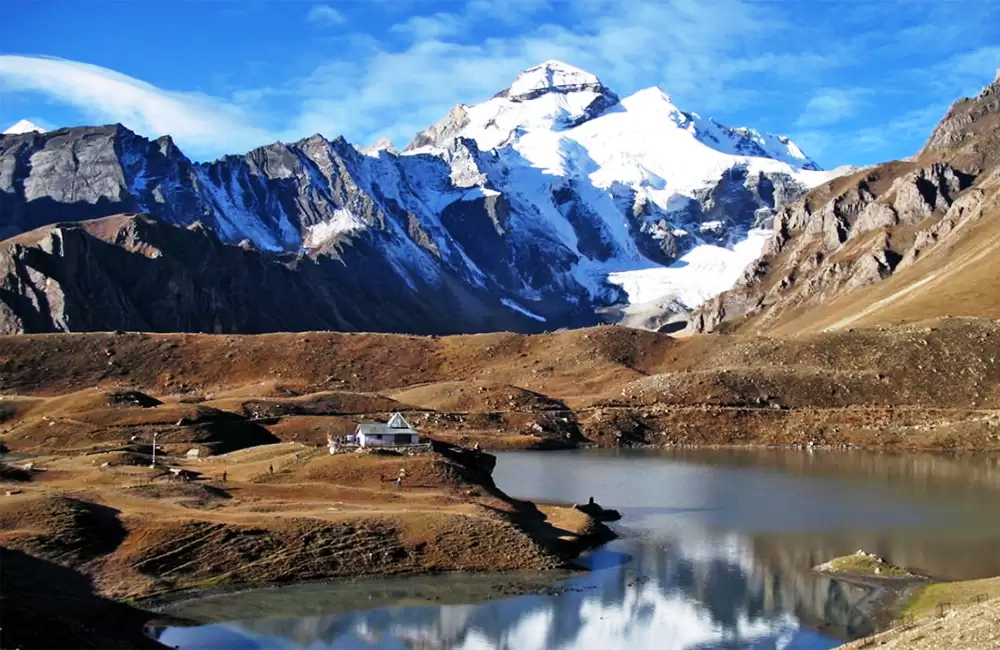
Mythological Significance
Adi Kailash, meaning “the original Kailash,” holds immense significance in Hindu mythology and traditions. It is believed to be one of the sacred abodes of Lord Shiva and Maa Parvati, and it mirrors the spiritual essence of Mount Kailash in Tibet. According to local lore, this region was the meditation ground for sages and yogis seeking divine blessings.
The Parvati Sarovar, a serene lake at the base of the mountain, is said to have been a favorite bathing spot of Goddess Parvati, while the nearby Gauri Kund is believed to hold her divine presence. Pilgrims also visit Om Parvat, a natural rock formation where the sacred “Om” symbol is etched on the snow-covered mountain, regarded as a miracle of nature.
The Journey to Adi Kailash
Starting Point: Dharchula
The journey begins in Dharchula, a quaint town on the banks of the Kali River, which forms the natural border between India and Nepal. Dharchula serves as the administrative and logistical base for the trek, where permits, guides, and porters can be arranged.

Route Overview
The Adi Kailash Yatra involves a combination of driving and trekking. The journey takes pilgrims through stunning valleys, ancient villages, and snow-capped peaks. Key stops along the route include:
- Dharchula to Gunji (Drive):
The road from Dharchula to Gunji passes through the charming villages of Narayan Ashram and Kuthi. Along the way, pilgrims witness lush forests, terraced fields, and the confluence of the Kali and Dhauliganga rivers. - Gunji to Nabhi (Trek):
From Gunji, the trek to Nabhi Village begins. This picturesque hamlet offers panoramic views of the Himalayas and is an ideal spot for acclimatization. - Nabhi to Jolingkong (Trek):
The trek to Jolingkong, the base camp of Adi Kailash, is both challenging and awe-inspiring. The path passes through meadows dotted with wildflowers, glacial streams, and rugged terrains. - Adi Kailash and Parvati Sarovar:
At Jolingkong, pilgrims are greeted by the majestic view of Adi Kailash towering over the serene Parvati Sarovar. The reflection of the peak on the lake’s crystal-clear waters creates a divine spectacle. Pilgrims perform rituals, offer prayers, and take a holy dip in the lake. - Om Parvat (Optional):
Many pilgrims extend their journey to visit Om Parvat, located nearby. The naturally inscribed “Om” symbol on the mountain is a sacred sight that reinforces the spiritual significance of the yatra.
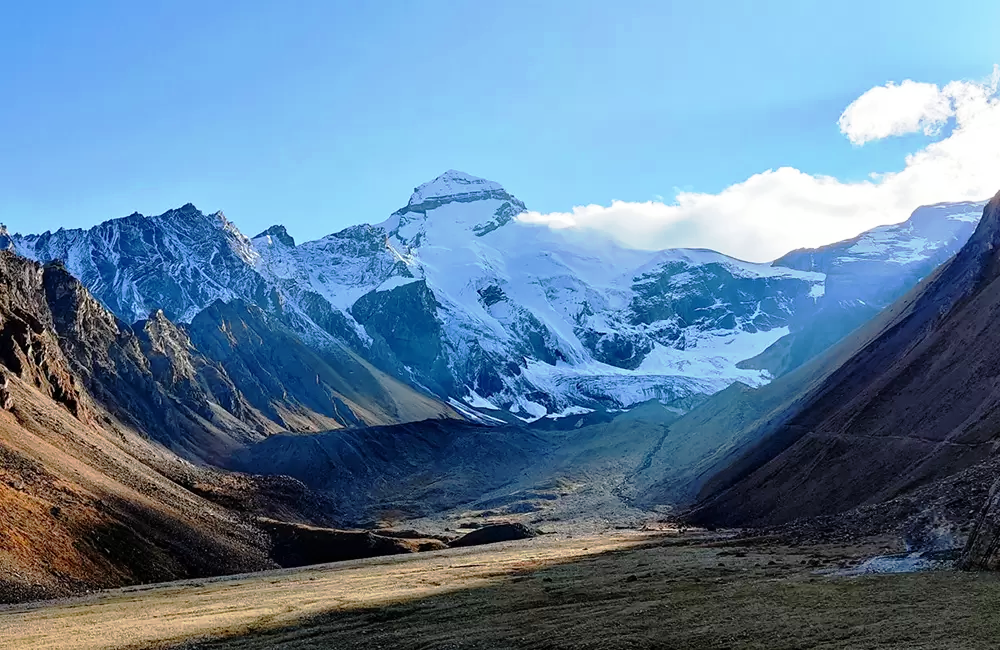
Natural Beauty and Biodiversity
The Adi Kailash Yatra offers an unparalleled opportunity to experience the pristine beauty of the Himalayas. From cascading waterfalls and dense pine forests to snow-covered peaks and glacial rivers, every step of the journey is a feast for the senses.
The region is also rich in biodiversity, home to rare species such as the Himalayan musk deer, snow leopards, and a variety of birds. The vibrant rhododendron forests and alpine meadows further enhance the trek’s visual appeal.
Challenges of the Adi Kailash Yatra
The journey to Adi Kailash is not for the faint-hearted. Pilgrims must prepare for the following challenges:
- High Altitude: The trek reaches elevations of over 15,000 feet, where the thin air can cause altitude sickness. Proper acclimatization is essential.
- Tough Terrain: The rocky paths, steep ascents, and narrow ridges require physical fitness and endurance.
- Weather Variability: The region experiences sudden changes in weather, including rain, snow, and strong winds, which can make the trek challenging.
- Remote Location: The lack of modern amenities and medical facilities along the route adds to the difficulty.
Preparation for the Yatra
Physical and Mental Readiness
- Engage in regular cardio and strength training exercises at least two months before the trek.
- Practice yoga and meditation to build mental resilience.
Gear and Essentials
- Wear sturdy trekking shoes and layered clothing to combat the cold.
- Carry essentials such as a first-aid kit, energy bars, a water purifier, and a good-quality backpack.
Permits and Guidance
- Obtain necessary permits from the Uttarakhand government.
- Hire experienced guides and porters to ensure safety and support.
Spiritual Practices and Rituals
Pilgrims visiting Adi Kailash often perform:
- Holy Dips: Taking a dip in Parvati Sarovar is believed to cleanse sins and purify the soul.
- Prayer Offerings: Devotees offer flowers, incense, and prayers at the foot of Adi Kailash and Om Parvat.
- Meditation: The serene environment provides an ideal setting for meditation and spiritual introspection.

Best Time to Visit
The best time for the Adi Kailash Yatra is between May and October, when the weather is relatively stable, and the trekking routes are accessible. However, the monsoon months (July–August) should be avoided due to the risk of landslides and heavy rainfall.
Environmental Responsibility
As Adi Kailash lies in an ecologically sensitive area, it is crucial to practice responsible tourism. Pilgrims are encouraged to:
- Avoid littering and carry back all waste.
- Use eco-friendly products and minimize plastic usage.
- Respect local customs, traditions, and wildlife.
By preserving the natural and cultural heritage of the region, future generations can continue to experience the sanctity of Adi Kailash.
Cultural Significance
The Adi Kailash Yatra is deeply intertwined with the rich culture of the Kumaon region. The local Rang community plays a vital role in preserving the spiritual and cultural essence of the pilgrimage. Their hospitality, traditional songs, and folk tales add a unique charm to the journey.
Conclusion
The Adi Kailash Yatra is more than just a trek; it is a spiritual odyssey that challenges the body, mind, and soul. The journey to the abode of Lord Shiva, through the rugged beauty of the Himalayas, inspires humility, devotion, and a profound connection to nature.
For those who undertake this sacred pilgrimage, the sight of Adi Kailash reflected in the tranquil waters of Parvati Sarovar is a reward that transcends words. It is an experience that leaves pilgrims with a sense of inner peace, gratitude, and a deeper understanding of their spiritual path.
The Adi Kailash Yatra is not just a journey—it is a transformative experience that stays with the soul forever, a timeless reminder of the divine’s eternal presence amidst the splendor of the Himalayas.
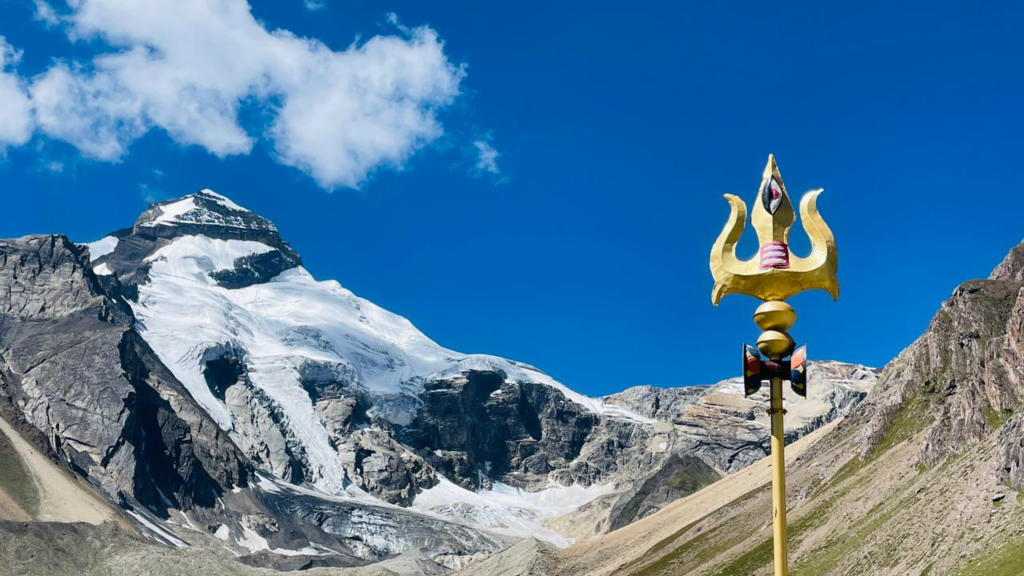
Book your Yatra Now 9872558085
Best spiritual touring agency in India.
Experience Spirituality


